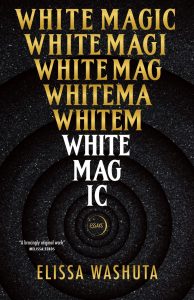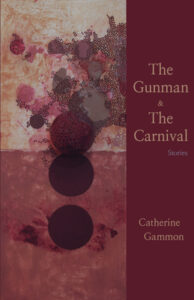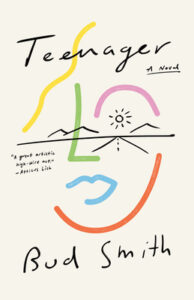Nonfiction. 425 pgs. Tin House. April 2021. ISBN: 978-1-951142-39-1.
“A book is proof that humans are capable of working magic.” – Carl Sagan
“If you want to spot the trick in a magic trick, read the movements and do not follow the magician’s gaze,” my father used to remind me as he stealthily pulled a quarter out of my young ear. Something I found myself remembering in reading Elissa Washuta’s White Magic. Part exploration of inherited trauma, part feat of universal understanding, White Magic follows Washuta through the life and end of an important romantic relationship, which she uses to give structure to her odyssey. Washuta divides the book into three acts, each given its own tarot reading, each delving into a different angle of the relationship—before, during, and after. By dismantling traditional ideas of chronology and plot, White Magic challenges us to rethink narrative, place, meaning, and inheritance. Washuta tells us from the start that, “the writing should teach the reader how to read it.” This, a rule reminiscent of the way in which we analyze others, or decipher magical illusions.
A magician’s best tool is distraction, a trick that Washuta manifests by drawing our attention to pop culture references and serendipitous life moments, while still obstructing from view the vast terrain on which these moments are planted. We follow Washuta’s gaze through Act I, her quest to find the root cause and meaning of the attacks she’s had to endure. Mysticism, astrology, and witchcraft become veils through which we process her story, as Washuta develops the ghosts that will come to haunt us the deeper we follow her into her journey. As the narrator casts spells to expel the evil that has manifested in her life and attract love without conditions, we await for results with bated breath. It is not only Washuta’s sanity, but also our own, that is at stake.
My childhood was characterized by cards and objects made valuable by their ability to disappear. A button was no longer a button, but rather a conduit for supernatural activity. Aware of this association, Washuta strips her quest of its supernatural veil in Act II, and abandons the witchcraft we grew to depend on as a compass. We have no choice but to look at what Washuta puts directly in front of us, our beliefs shaken and our faith tested. As she shares the stages of her break-up and heartbreak, Washuta contextualizes her pain with the bars and spaces she used to occupy. She grounds us in place and highlights the inherent power of the land on which we stand. We come to understand her trauma as painted across the landscape; it is not moments dotting the horizon like trees, but rather the soil on which every tree grows. By integrating living history into her personal narrative, Washuta proves that every story is built on, and builds on, ancestral ground.
My father’s signature trick was one in which he would hold a card in his palm, wave his hand up and down, and on the count of three… poof! The card was gone. His hand moved so swiftly, I could barely tell the moment the card vanished. But vanish it did, and then just as easily, my father conjured it back. With the third and last act of White Magic, Washuta achieves this trick. In reframing familiar memories as a time loop in which themes and people recur, Washuta creates folds in her narrative. The result is a relationship condensed in time and made mountainous, with which Washuta demonstrates the permanence of place and, by contrast, the fleetingness of people. We come to understand that signs are not to be deciphered, they are to be acknowledged. They appear like lamp posts, to awaken and alert us. From this lesson, Washuta ditches the external guides and builds her own map—a timeline so successfully curated that we must believe it was the product of deep reflection and understanding.
Washuta tells us that “we shape the recollected by how the remembering changes us.” In this way, White Magic is the act of remembering, materialized. In reading the book, I became hyper-aware for the signs around me and eagerly set to identify a pattern. My journey was fruitless at first, as I couldn’t quite connect my experiences in a meaningful way. Then, on Dec. 21, 2020, when Jupiter and Saturn aligned to form the Great Conjunction, I had an epiphany while crying from new heartbreak in my bathroom. I had been here before, not just in this place but in this moment in time. I looked back at my winters: December 2019-January 2020 I cried over a man who had wormed his way into my psyche, whose leaving didn’t make me hate him but made me hate myself; February 2019, I sat in my tub letting water run over me as I mourned the end of a three-year relationship, the last year of which being the loneliest; late January 2012 I fell in manic love with someone who was leaving the state, an injustice I cried over sitting on the toilet lid with my face buried in my palms; early December 2011 my first relationship came to an end after two years of trying to not let my partner eclipse me; and in February 2007, the month of the sexual assault from which my doubts about self-worth would stem, my roommate found me huddled and asleep in the shower after I’d tired from trying to wash the attacker off me. I could see myself unravel year after year, and suddenly a wave of relief encompassed me. For I came to the same understanding as Washuta had—that once we see the pattern, we control the magic. To remember is to wield power. The past is not immune to interpretation, and when we remember we give it meaning.
I was still young when my father revealed the secret to his vanishing card trick. However, knowing the secret did not solidify in my mind that my father wasn’t capable of real magic. When I’d watch him make the card disappear, I’d yell, “That one wasn’t magic!” if I spotted the sleight of hand. Or, “Wow! That one was magic!” if I didn’t. It’s only magic if you maneuver your way through correctly. Toward the end of White Magic, Washuta tells us, “any narrative is a magic trick: the unfolding happens where you are not looking.” It’s only magic if you can hold the audience’s gaze, if it works. White Magic gives us a starting point from which we can examine our own past, a portal that helps unlock our memories in a new way. In this, and many other ways, Washuta’s book is magic.
White Magic is available through Tin House. Purchase it now through their website.
TANIA PABÓN ACOSTA is a Puerto Rican writer now based in New York. She holds an M.A. from the University of Puerto Rico, and an M.F.A. from Sarah Lawrence College. A finalist for the DisQuiet Prize, her work has appeared in Cosmonauts Avenue, The Los Angeles Review, The Rumpus, Entropy, Catapult and Medium, among others.
Like what you’re reading?
Get new stories or poetry sent to your inbox. Drop your email below to start >>>
OR grab a print issue
Stories, poems and essays in a beautifully designed magazine you can hold in your hands.
GO TO ISSUESNEW book release
China Blue by Catherine Gammon. Order the book of which William Lychack Jeffries calls “a fiery declaration of all that is inexpressible about desire and loss and the need to find a home in a world in which even the most solid and real of things feel often less than completely solid or real.”
GET THE BOOK



